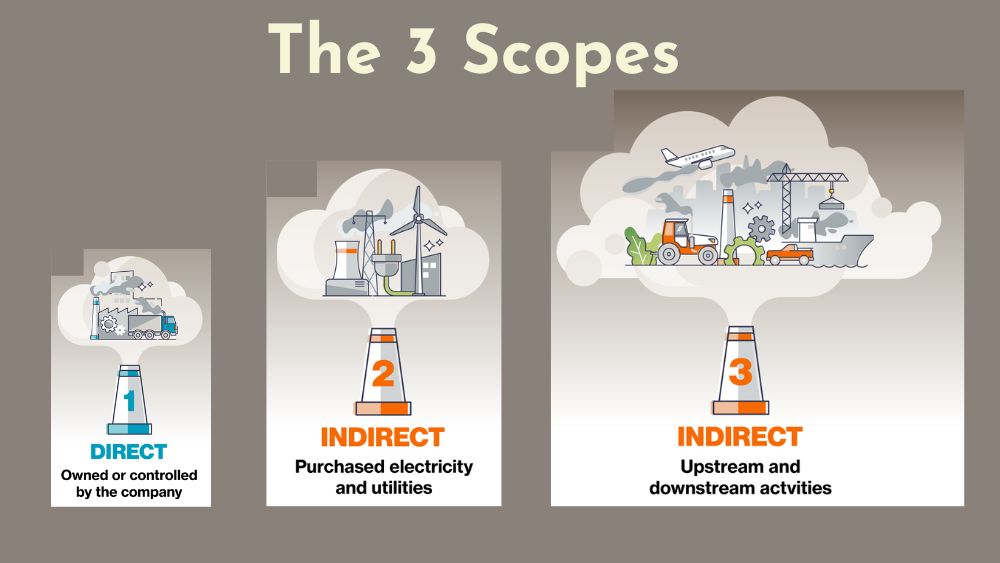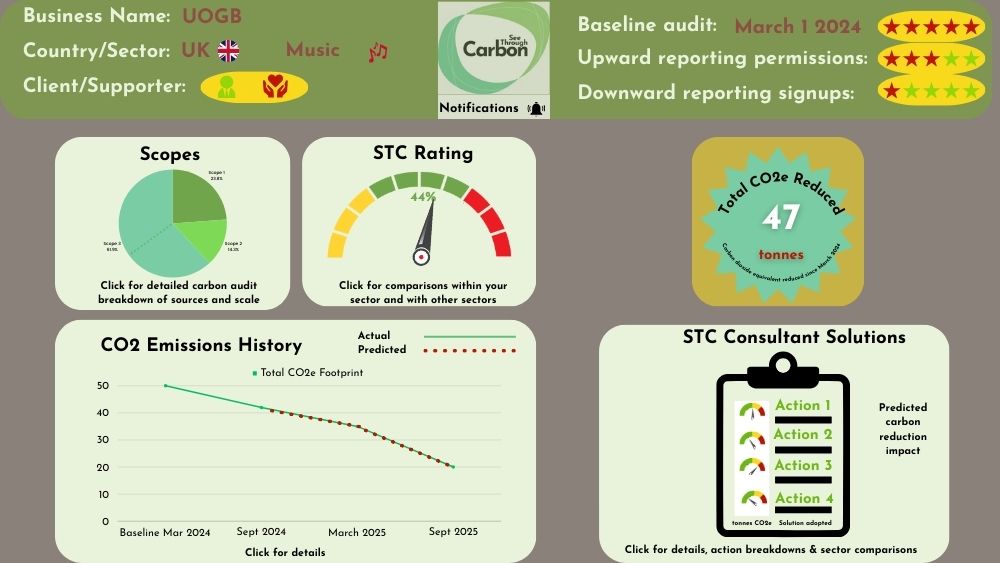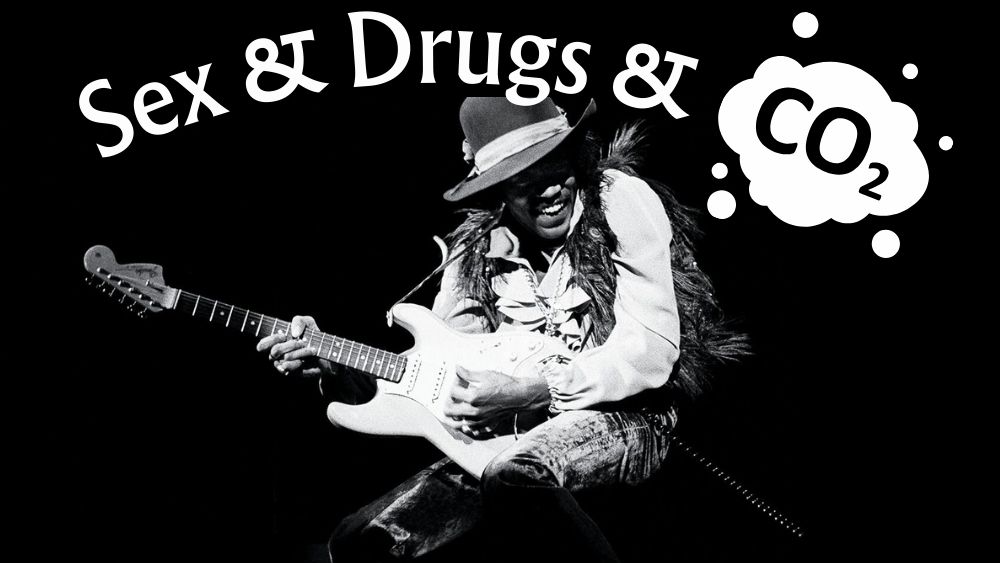Music to reduce CO2 – how a new accurate, free, open-source, transparent standard is rocking the world of carbon auditing
See Through Carbon’s has 7 Pilot schemes for its innovative carbon auditing standard. This is the 6th of 9 articles introducing Pilot 2: UK Live Music.
- Why See Through Carbon Matters
- What See Through Carbon Is
- What Carbon Auditing Is
- What See Through Carbon’s 7 Pilot Schemes Do
- Why See Through Carbon Chose UK Live Music for Pilot 2
- How See Through Carbon Pilot 2: UK Live Music Works
- The Benefits of participating in Pilot 2: UK Live Music
- How To Participate in Pilot 2: UK Live Music
- Pilot 2: UK Live Music FAQs
These articles all presume:
- We urgently need to reduce carbon
- This requires accurate, comprehensive carbon footprint measurement
Music through carbon goggles – remarkably unremarkable
See Through Carbon chose the live music industry because, viewed with Carbonvision, a live music gig is both unremarkable, and unusual.
Unremarkable, because music concerts share certain technical features that are no different from any other event where humans gather. Unusual, because the music industry has some peculiarities that present an interesting challenge for conventional carbon footprint measurement.
The similarities
Like any human activity, a music concert has carbon implications, requiring the same solutions:
- Event: Something happens that wouldn’t otherwise have happened
- Emissions: This generates additional greenhouse gases that wouldn’t otherwise have been emitted
- Measurement: These emissions should be measured with the same care we devote to the money the event generates, and assigned as part of the carbon footprint of whoever instigated the Event.
- Solution: Accurate measurement identifies that event’s biggest carbon emission sources.
- Action: Carbon-reducing solutions to be implemented.
- Re-measurement: Using the same methodology, compare new figure to the baseline.
- Reduction: The difference between the two numbers (measured in tonnes of CO2 equivalent reduced or sequestered) measurably reduces the carbon impact of that event, compared to before the measurement was taken.
This is not only common sense, it’s also the basic procedure for any carbon reduction, whether you’re an individual, a country, a brand, or a multinational. Functionally, a gig is identical in carbon accounting spec to sports events, prayer meetings, cinema performances, chess tournaments, medical meetings or comic conferences.
The differences
Compared to the sophistication and level of granular scrutiny we devote to tracking financial assets and liabilities, carbon accounting is not even in its infancy – more like barely foetal.
If the toolkits available to financial accountants could fill a basement workshop, those at the disposal of a carbon auditor could fit into a shopping bag.
When it comes to live music there are two particularly glaring gaps, for which standard carbon accounting offers only the most amateurish of bodge jobs.
Difference 1 – Scope 3 conversion factors
Carbon auditors divide any entity’s emissions into three Scopes.
- Scope 1 is what most of us think of – the emissions under our direct control, like what goes on in an office or factory.
- Scope 2 is made up of the utilities we use, consumed indirectly from our power or water suppliers.
- Scope 3 is everything else, everything that wouldn’t have been emitted had you not done the thing you do.

Each industry has its own characteristic distribution of emissions between these sectors – for service industries, Scope 1 might be the biggest wedge in their pie chart, for aluminium smelters, Scope 2, and for skyscraper builders, Scope 3.
Calculating every single emission individually is impractical and unnecessary. Auditors deploy a variety of specialist toolkits, consisting of standardised conversion factors. These are reliable because they’re based on a large volume of high quality data, like the actuarial tables used by insurance brokers used to assess the chances of your home being flooded, or income needs tables used by divorce lawyers to determine an ex-spouse’s ‘needs’.
But no such table exists for the live music industry. Sporadic, one-off research on single data points has made it clear that live music is an industry for which Scope 3 makes up by far the largest part of their carbon footprint, nearly all from fan travel. Single event research has reckoned audience transport getting to and from a concert accounts for ‘80%’ of total emissions. This is definitively Scope 3 (no one drives to an empty venue), but clearly this would be very different for a local folk group playing above a pub – where most of the audience would have walked, cycled or taken public transport – and Taylor Swift playing a football stadium on a World Tour – which fans may fly across the world to attend.
Because there’s no standardised table that responsible carbon auditors can refer to, See Through Carbon is creating one.
That’s one big reason why STC chose live music for Pilot 2. But there’s another one too…
Difference 2 – carbon liability allocation
Once you’ve measured the total net carbon emissions, the next stage of carbon auditing is to allocate them to the responsible parties.
This process is very similar to the more familiar money model of accounting – financial assets and liabilities are shared out among the parties involved. Part of the Scopes 1 & 2 of a small business supplying a bigger one should be allocated to their bigger customers as part of their Scope 3.
This trail is easy to follow, as the ‘production line’ is linear, with a clearly delineated upstream and downstream pecking order made obvious by who is invoicing whom; a screw supplier is downstream from a gearbox assembler, who’s downstream from a car manufacturer etc.
But the music industry is much fuzzier, more chaotic, case-by-case, and dynamic.
The roles of the different stakeholders are clear, but their degree of ‘responsibility’ for putting on a concert, much less so.
The minimum required to stage a music concert is two parties.
- A Venue – i.e. somewhere to play
- Performers – i.e. an act to watch
Live music may or may not also be:
- An audience (Concert In The Key of C is an example of a live music gig featuring a musical collaboration between ukulele and bagpipe maestri, playing to an audience of passing sheep). Bigger audiences are what Pilot 2 seeks to quantify in terms of carbon impact.
But there’s often another key instigating party:
- A Promoter – sometimes the venue takes on the role of promoter, negotiating all its financial risks and rewards, sometimes the performers take on this role. Established acts usually have specialist promoters, who might in turn involve sub-promoters.
The bigger the act, the more parties can be involved, like:
- agents
- ticket agents
- record labels
- artist managers
The music industry can get very complicated, in an organic, chaotic way that’s not a neat fit for the cookie-cutter clarity of an industrial supply chain.
This means the ususal tie-breaker tools of the carbon auditor don’t work. Like movie detectives, they start by Following the Money (they call it a ‘revenue-based allocation model’) but like the movie industry, the music industry’s money flow is notoriously opaque.
Any individual concert’s financial split may be:
- unique
- not clear until months after the event
- highly commercially sensitive, to put it mildly
Once See Through Carbon has collected sufficient data, its expert Trustees will decide how the STC standard will allocate Scope 3 carbon liabilities between these parties in a way that balances practicality and fairness.
This complexity (along with less charitable considerations like preferring greenwash and not really wanting to know the answer) may explain why live music has such a poor carbon auditing record.
But in the real world, carbon don’t care. Whether we record, measure and allocated it or not, live concerts keep pumping more greenhouse gases into the atmosphere.
That’s why, in order to measure the actual carbon footprint, including any Scope 3 elephants in the room, See Through Carbon’s Pilot 2 is researching the world’s first large-scale, methodologically robust, high quality and granular database to create a reliable, evidence-based toolkit to allocate emissions.
Pilot 2 Process
Pilot 2 starts with the two essential parties required for a concert – venues and acts.
We want to sign up both, but it makes sense to focus on the former, as they can provide far more data points than the latter (there are many more bands than venues, and any one venue tends to have many more events a year than most bands).
Whether venue or act, Pilot 2 participants will access the following services:
- Baseline Carbon Footprint: STC’s network of expert carbon auditors will calculate participants’ current carbon footprint, including all three scopes, using the most accurate available data, conversion factors and estimates. Scope 1 (direct emissions under the venue’s direct control) and Scope 2 (indirect emissions from utilities, principally energy) are relatively straightforward to calculate, but are likely to be only a very small part of any venue’s total carbon footprint. Cost (inc. tax): £0.00.
- Audience Transport Survey: The largest part of any venue’s carbon footprint will likely be its Scope 3, the largest element of which is almost certainly the transport-related emissions created by fans attending the event. As this is such a key element, and so underreported, STC specialists are also offering advice on, and even facilitating, methodologically robust surveys (see below). Cost (inc. tax): £0.00
- Carbon Consulting: STC’s network of expert carbon consultants will provide a list of carbon-reducing Solutions, each with a carbon savings ‘price tag’ attached, which it’s then up to the Pilot participant to implement. If successfully implemented, the difference between the baseline measurement and new carbon footprint is your carbon reduction. This is the evidence governments are increasingly requiring for reporting Carbon Reduction Plans (CRPs). Cost (inc. tax): £0.00.
- Data Visualisation Tools: as the database grows, STC will make the aggregate data public, in order to educate, and provide evidential basis for carbon-reducing actions (for example, local councils providing late night bus services, allowing more guests to spend more at venue bars). This database will be publicly available, but Pilot participants will have the competitive advantage of comparing their own particular datasets with the aggregate data, to determine their competitive position. Cost (inc. tax): £0.00.

(sample dataviz mockup)
Pilot 2 participant obligations
In return for these free services, STC asks for a very limited amount of data to compile its Scope 3 conversion factor tool, which it will make open source so anyone can benefit from using it.
STC is only interested in anonymised, non-personal data relating to carbon emissions. STC does not and never will ask for or store, any personal information (such as names, email addresses, bank details, home addresses etc.).
As STC is only interested in carbon reduction, it has no means to monetise this data, even if it wanted to. Understanding the commercial imperatives of the music industry, however, STC also collects non-personal data that provides evidence that all music industry stakeholders could make more money, while still reducing carbon. This is clearly the best outcome for all parties.
Direct Carbon-related Data
The main source of data directly related to carbon reduction is an Audience Transport Survey.
Pilot 2 will be using a variety of methodologies to conduct these surveys, in isolation or combination:
- ‘Clipboard’ version: Face-to-face (volunteers with clipboards/iPads ask fans as they enter and exit the auditorium)
- ‘Card’ version: audience members fill out forms themselves, which the venue collects to be manually entered
- ‘QR Code’ version: audience members use their smartphones to automatically enter the data
These surveys only ask for the minimum information required to calculate Scope 3 – here’s an example of a ‘Card’ from an early pilot survey.
Why audience transport surveys matter
Audience transport surveys are required to accurately measure the Scope 3 element of any live music event.
Currently, there is no statistically sound dataset on which to base calculations, which is why Pilot 2 is creating this dataset itself. The STC database will be open source, to:
- Provide a statistically sound basis for estimating live concert carbon footprints
- Demonstrate STC’s transparency
- Invite public scrutiny
- Help stakeholders make informed decisions
STC is helping Pilot 2 participants conduct transport surveys to build this database, but once sufficient data has been gathered, there should be no need to repeat such detailed surveys.
The Pilot database will provide a robust basis on which to estimate Scope 3 emissions in future. This will enable the music industry to be a trailblazer in responsible, serious, accurate carbon reporting, instead of its current status as among the most disingenuous greenwashers.
Anonymised ticket sales data
To this end, in combination with Audience Transport Surveys, Pilot 2 participants with access to non-cash ticket sales data can help by providing STC with anonymised, non-personal ticket sales data from the same event that has transport survey data. For each event, all STC needs is:
- The first half of the post code from the billing addresses of all credit-card transactions related to each concert
- The number of tickets per transactions
STC’s statistical experts will then compare this data with the ‘gold standard’ real-world data from the corresponding transport survey to look for consistent correlations. Once these have been established, there will be no need for labour-intenstive transport surveys, and the Scope 3 carbon footprint can be accurately deduced from the credit card data already being collected.
The more detailed and granular the database, the more nuanced STC’s estimates will be. The data is much less useful if you can’t segregate the different transport carbon costs of say, a local teenage folk band playing above a pub, a touring ABBA tribute act at a regional theatre, Stormzy at the O2 and Taylor Swift at Wembley Stadium.
Accurate predictions/estimates of Scope based on ticket sale data alone would, in turn, facilitate the mass collection of data, including the possibility of retrospectively mining past events.
Each additional dataset would provide more solid evidential basis to implement carbon-reducing policies, e.g.councils providing late night bus services so people don’t have to drive, or bands/promoters/venues routinely offering hub coach/minibus services to reduce their fans’ car miles at their concerts.
Indirect, non-carbon-related Data
Carbon reduction aside, this open source dataset could be of great interest and use to a live music industry that’s struggling to survive and attract sufficient revenue to remain solvent.
To this end, STC is also collecting information that has no direct impact on Scope 3 reporting, but which might provide evidence for innovative ways of reducing carbon and making more money.
How does STC make money from this?
It can’t. STC has no bank account, so lacks a mechanism to monetise this dataset, even if it wanted to. STC is only interested in carbon reduction, and uses CO2e as its only metric, not money.
STC aggregates this anonymised data into a public database, publicly accessible at no charge. This is unprecedented and unique.
It will also provide an unprecedented and unique resource for the live music industry, by:
- Providing evidence to support or contradict current industry hunches about best practice (e.g. how far certain fans will travel for certain acts)
- Answering questions the industry is not yet asking, in particular the feasibility, or profitability, of providing transport for fans to attend concerts
- Facilitating related projects with non-carbon-related benefits (e.g. evidence to bus companies and local councils for the provision of night bus services to reduce carbon, reduce sexual assaults, increase revenue etc.)
There are two ways participants can provide data for the Pilot:
- As ‘Agent’ for STC, collecting minimal anonymised data only for Scope 3 calculation
- As ‘Principal’, incorporating STC’s transport survey into its own questionnaire, which includes personal data (e.g. email addresses for a mailing list)
See the ‘How To Participate’ article for details

